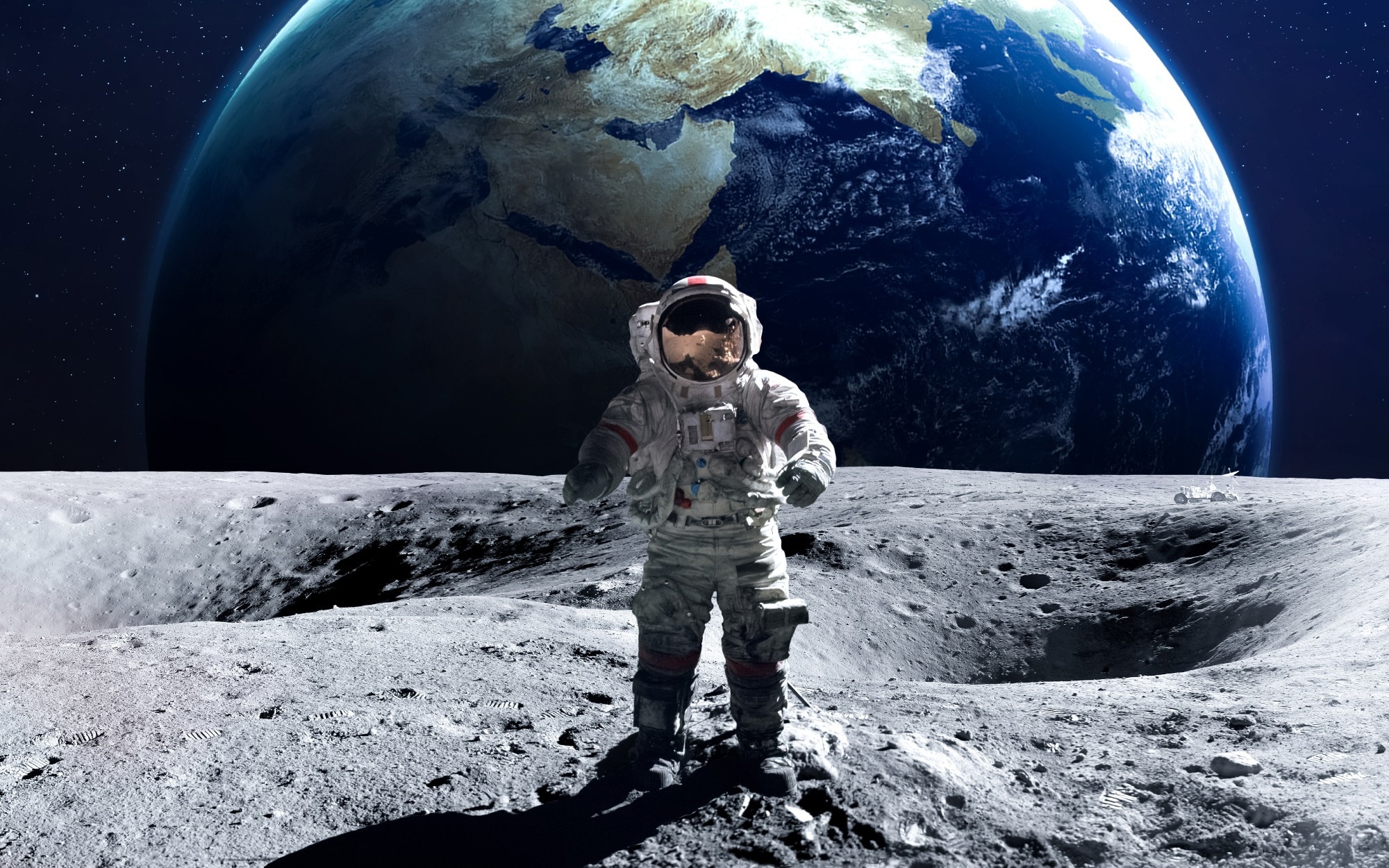Scientists from Harvard have revealed an out-of-this-world geoengineering approach that has the potential to slow the effects of global warming using space dust. While something of a moonshot, the researchers claim dust mined and launched from the moon could have an impact on the flow of solar radiation, slowing down the effects of climate change.

Image Credit: Vadim Sadovski/Shutterstock.com
The paper, recently published in the journal PLOS Climate, proposes that a manmade dust belt between the Earth and the sun at “Lagrange Point” would create a kind of solar shield. The Center for Astrophysics Harvard & Smithsonian and the University of Utah (U of U) led the study of the concept after studying planetary formation around stars.
The concept of using objects and screens to block the sun’s radiation to slow down the current rate of global warming has been in theory for decades, but the latest concept reveals that the fundamental properties of moondust are ideal for use in the sun shield scenario.
It is amazing to contemplate how moondust — which took over 4 billion years to generate — might help slow the rise in the Earth’s temperature, a problem that took us less than 300 years to produce.
Scott Kenyon, Study Co-Author, U of U’s Center for Astrophysics
Moonshot Idea
The lunar dust particles are the right size and shape for deflecting the sun’s radiation and sunlight away from the Earth, but further outside-of-the-box thinking is required to create the necessary dust shield at the proposed Lagrange Point.
Launching the dust from Earth into space would not be feasible in terms of cost and logistics; this led the U of U team to the idea of using ballistic devices on the moon itself to launch the moondust to create the kind of dust cloud needed to scatter sunlight while saving energy and costs.
It is astounding that the sun, Earth, and moon are in just the right configuration to enable this kind of climate mitigation strategy.
Scott Kenyon, Study Co-Author, U of U’s Center for Astrophysics
One of the major challenges, however, is ensuring the repeatability of this process – the moondust would need to be fired towards the Lagrange Point repeatedly to maintain the sun-blocking properties of the shield. The sun’s radiation would disperse the particles every few days; thus, consistent replenishment would be necessary.
Despite the amount of labor and money needed to carry out this process, the idea is still worth contemplation, as the global science community does not want to leave any stone unturned when it comes to tackling the climate emergency.
Mining the Moon
The idea of mining the moon certainly sounds like something straight out of a science-fiction movie, but another benefit is that the environmental impact of mining for minerals at such a scale here on Earth is somewhat counterintuitive to the solution the team is trying to provide.
One of the main benefits of mining and launching from the moon compared with a launch from Earth include the fact the moon has a ready-made reservoir of moondust which requires much less kinetic energy to achieve a sun-shielding orbit than launching Earth-based resources, such as coal dust and salt which were both under consideration.
While the study was met with a warm reception, the team appeared to usher on the side of caution as the team’s research only explored the potential influence this scenario would have on mitigating the effects of global warming.
The concept remains a moonshot idea as it stands, and the emphasis remains on trying to cut back greenhouse gas emissions, which requires socioeconomic transitions and energy-based solutions to move away from our terrestrial dependency on fossil fuels.
We aren’t experts in climate change, or the rocket science needed to move mass from one place to the other. We’re just exploring different kinds of dust on a variety of orbits to see how effective this approach might be. We do not want to miss a game changer for such a critical problem.
Ben Bromley, Professor of Physics and Astronomy, University of Utah
References and Further Reading
Could space dust help protect the Earth from climate change? (2023) Harvard Gazette. Harvard Gazette. Available at: https://news.harvard.edu/gazette/story/2023/02/could-space-dust-help-protect-the-earth-from-climate-change/
Bromley, B.C., Khan, S.H. and Kenyon, S.J. (2023) “Dust as a Solar Shield,” PLOS Climate, 2(2). Available at: https://journals.plos.org/climate/article?id=10.1371/journal.pclm.0000133
Disclaimer: The views expressed here are those of the author expressed in their private capacity and do not necessarily represent the views of AZoM.com Limited T/A AZoNetwork the owner and operator of this website. This disclaimer forms part of the Terms and conditions of use of this website.